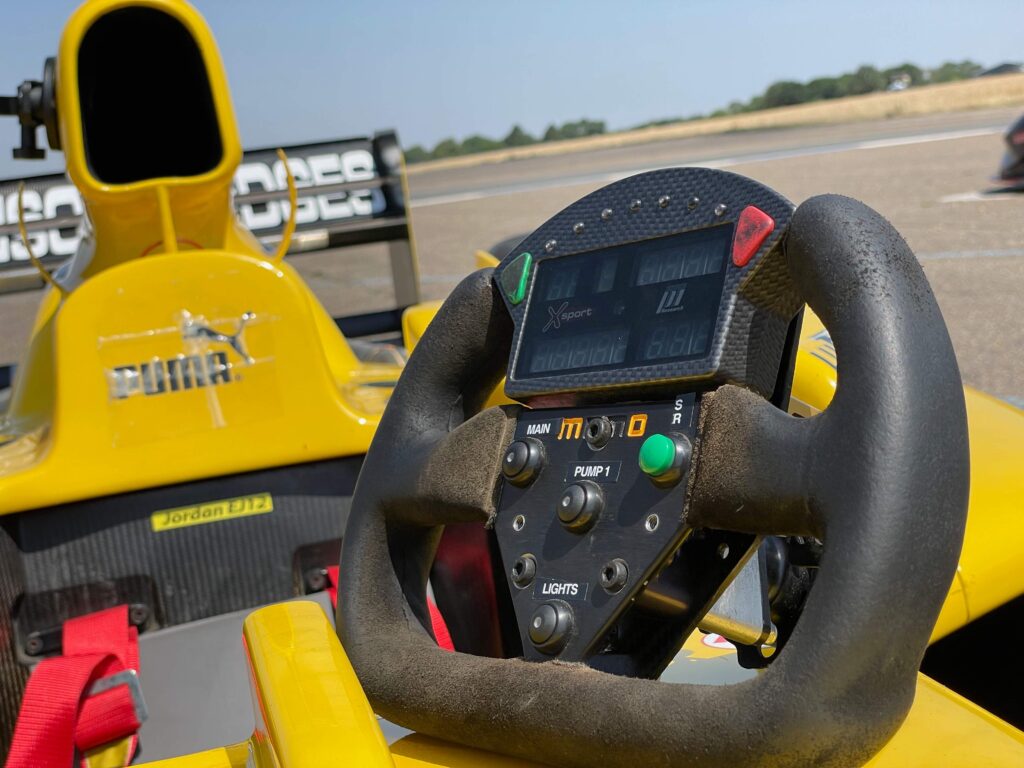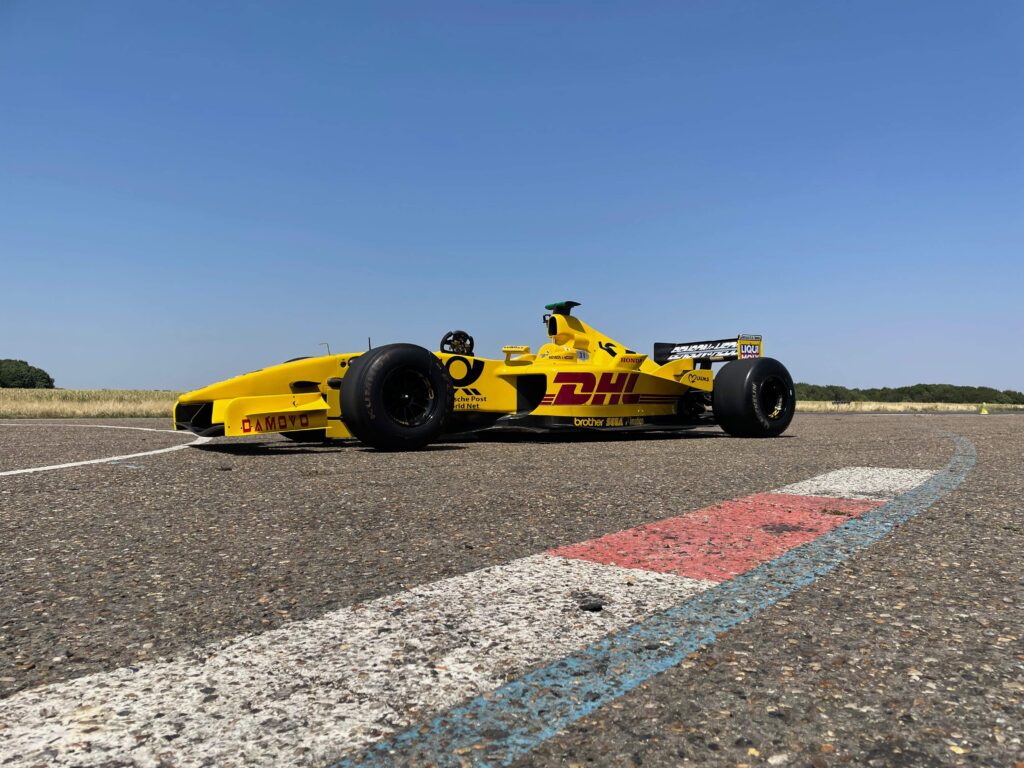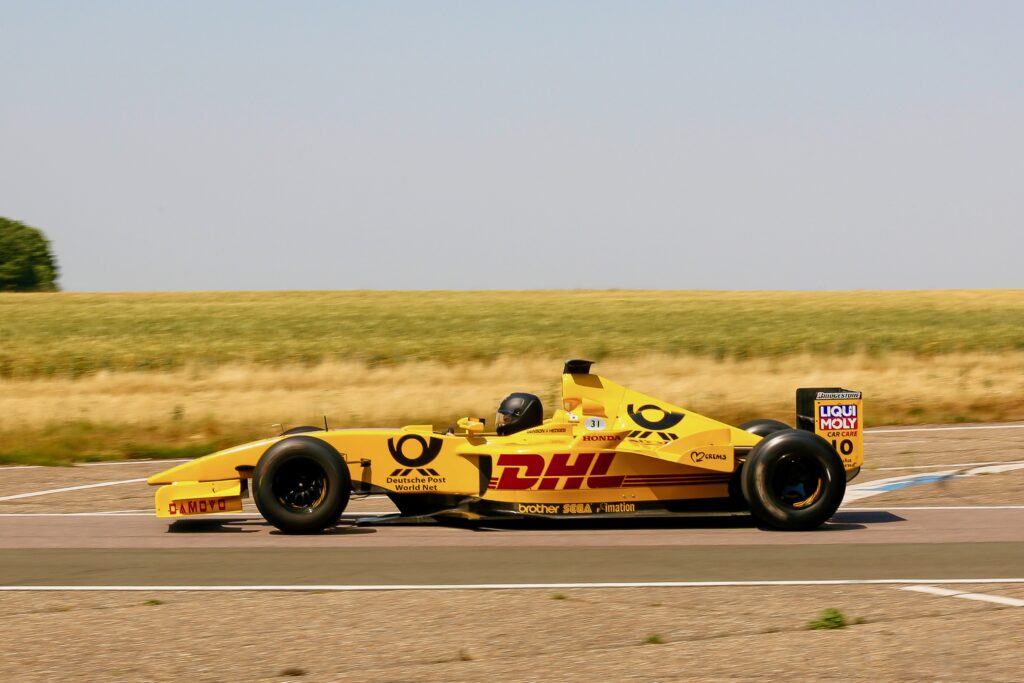A Formula One car is like a predator, a highly evolved species that is perfectly engineered for its environment. Living at 200mph+, these rarified creatures not only accelerate with brutal efficiency but are also capable of generating G-forces akin to that of a fighter jet. They are the ultimate expression of science and engineering forged in the crucible of motorsport.
This Jordan EJ12 saw action in the 2004 Formula One World Championship, a distinctive yellow and black competitor of the now iconic V10 era. Even today at 20 years-old, it still represents one of the purest expressions of automotive performance on Earth. A carbon fibre skeletal structure is encased in athletic bodywork sculpted by the wind tunnel. Its wings, channels, ducts and outlets manipulate the air to its designer’s will, something that serves as a great ally at race pace. An F1 car generates so much aerodynamic ‘downforce’ that it could theoretically drive upside down. The near 700bhp power unit resides mere inches from the driver’s back, reinforcing a sense of organic and mechanical fusion between man and machine.
Southern Group happenings: May 2024
NASA has trained more astronauts in its history than humans have piloted an F1 car. The opportunity to see the world from this high-octane perspective doesn’t come along very often. Lowering yourself into the almost claustrophobic cockpit you feel cocooned and physically bonded to the machine. Clamp the detachable racing wheel in place – a piece festooned with LEDs and buttons – then wait. And wait some more…



Considering the performance potential for outright speed, you do need to do a fair number of ‘pre-flight checks’ before the car is even fired into life. A team of mechanical nurses tend to this demanding vehicle with millimetric precision. While this EJ12 has had its fragile V10 engine swapped for a hardier Judd racing V8, it still requires fluids to be warmed before the motor will even entertain starting. Those wide slick tyres also need some special attention, as without temperature within their rubber construction to unlock their sticky properties, this car becomes a very costly yellow projectile.
A series of switch flipping and button prodding initiates a loud whirring before a violent splutter from the engine. Its somewhat intimidatingly high idle and continuous vibration certainly make things seem rather serious. Visor down, you’re signalled to join the track.
A few ginger laps to acclimatise reveal heavy but incredibly precise steering. Tiny inputs result in huge lateral leaps, neck-snapping in their immediacy, almost telepathically relayed from brain to car. Gearchanges from the wheel-mounted paddles are just as assertive.
Rounding the final corner and being presented with an open piece of tarmac was only going to yield one result. A firm twitch of the throttle pins your internal organs in place as this finely tuned specimen of sport accelerates towards the horizon. However, that distant horizon doesn’t stay distant for long, and a hard push on the stiff but feelsome brake pedal can generate up to 5Gs in race trim.



Sure, it predictably stops and goes with the velocity of a cat struck by lightning, but the real unshackling from the world of physics is delivered through the corners. The freedom of which an F1 car changes direction is unlike anything else. You can forget a McLaren Senna or even an Ariel Atom, the lack of hesitation, chassis inertia, and sheer speed this thing carries around a tightening bend is almost unfathomable. The only real limitation is the physicality of the driver behind the wheel and their strength to withstand the forces at play. There is a reason a modern Formula 1 driver has to be as fit as an Olympic athlete to last a race distance.
All too soon it was time to pit and bring the car to rest. The mechanical medics raced to the Jordan carrying life-support equipment for the demanding machine. A flick of a switch and the once vocal beast fell silent.
Awestruck and a little achy from the physical assault, my time behind the wheel of an F1 car was over.

